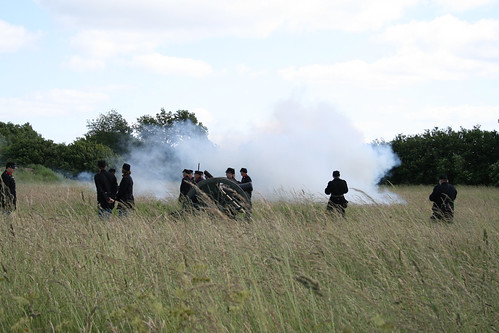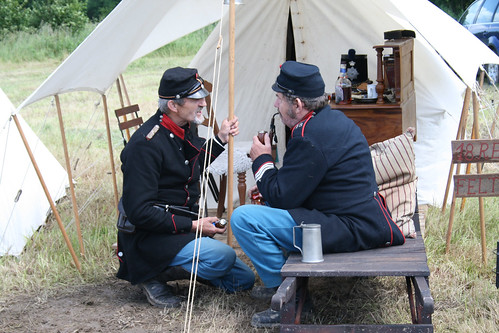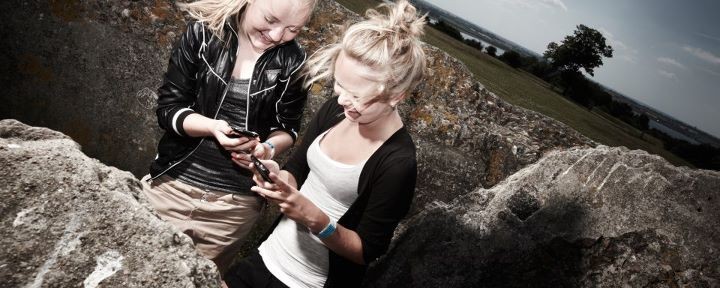This is a guest post by Iulian who has lived in Sønderborg for three years and has a blog in Romanian about social media for non-profits.
After spending the whole weekend surrounded by gunpowder smell and a lot of soldiers from a century and a half ago I think it might be interesting, for those of you that didn’t participate, to see what happened and why you shouldn’t miss it the next time.
First of all, is the night battle. Around 2:30 in the morning the things start moving in the camp. People gather close to the water where the Prussians are expected to attack. Boat movements, cannon fire, rifles and a lot of tension in the air. This happens in semi-darkness, only enough for the human eye to distinguish the flow of the events. During all the events, there is a narrator that makes the things even more interesting by giving background insights.
Then I remarked the authenticity. The people are dressed in the old costumes, they live in the army tents, they eat and drink from the old dishes and food is served by the army regiment from an army car attachment. Some of the cooking ladies even have an old outdoor stove or a fireplace in the ground for preparing the food. What’s the interesting part is that you can also be part of the people living in the camp, taking part in all the activities.
There are often demonstrations of the weapons, military activities and costumes. You can see cannons firing from 2 metres, battle simulations with a big number of soldiers, different weapons in actions, costumes of the people from that age, horse presentations. It seemed that there is always something happening there.
Besides the activities, there are also small exhibitions with the equipment and tools used at war. If you’re a fan of old weaponry, this is the right place to come. Not only will you get to put your hands on the old rifles (by the way, one was around 4 kg) but you can even talk with the owners and they can astonish you with some nice stories. I could see old weapons and aspects of the military but there were also exhibited utensils used by paramedics, showing the progress that medicine has made in 150 years.
The people scale the event. As I said, they are very happy to exchange some words with you. For example, this man from Norway was amazing. He explained for hours to all the curious people what was “his” purpose in the battle. How technologically advanced was his weapon. What equipment did he carry, what are the symbols on the hat that made him recognizable as part of a specific regiment, what is the decoration on his collar and how year by year he needs to regain it. There were also some Czech guys that were in the party mood and they seemed to have some prohibited alcohol in the camp, without their commander knowing it. That was probably the fun of taking part in the event as a participant and not only as a spectator. And they seemed to have the most of it.
After such a long tour of the camp, before going home a bit smokey from the fire and gunpowder, you can try the desserts in one of the tents. This old style sweet, made without cooking, was very good. Don’t miss it next year! And if you have proofs that you’ve been around the events, just post them here.






















































